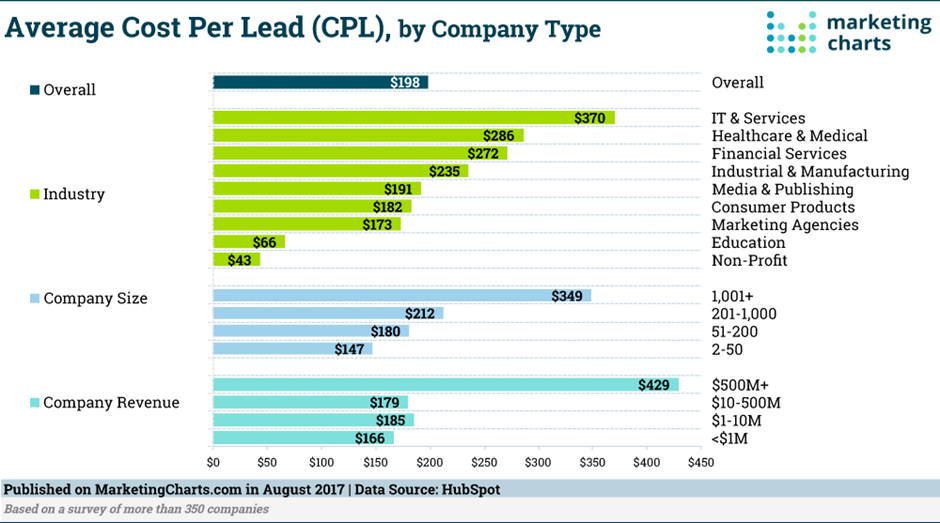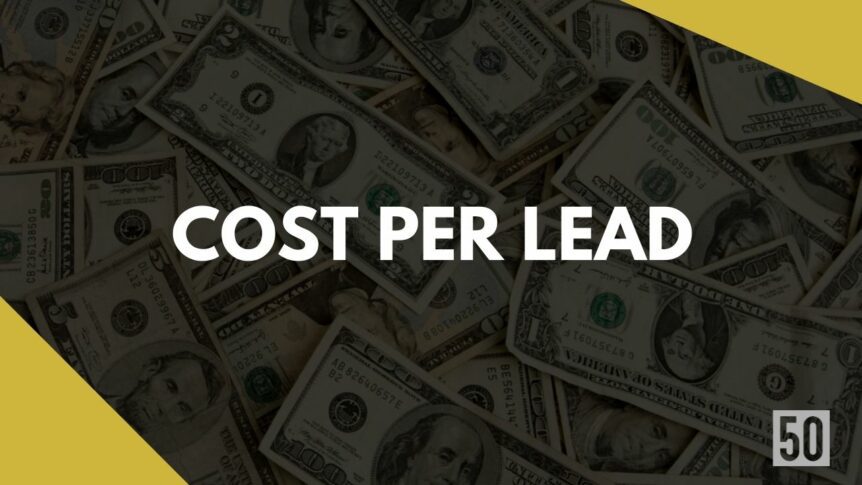Are you looking for a way to gain insight into the effectiveness of your marketing campaigns? Are you curious about measuring how much each lead is costing you? Cost Per Lead (CPL) offers valuable data that can help a business make more informed decisions. In this blog post, we’ll give an in-depth look at CPL – discussing topics such as what it is, different metrics associated with it, and how to effectively measure it. Read on to learn all the benefits CPL has to offer!
What is Cost Per Lead?
Cost Per Lead (CPL) is an important metric that measures the performance of a digital ad campaign. It indicates how much it costs to generate a single lead from each advertising dollar spent.
CPL measures the effectiveness of digital marketing efforts in obtaining leads for sales conversions. Marketers need to track CPL to help determine which ad campaigns are effective and which ones aren’t reaching their desired objectives. Tracking CPL allows companies to make adjustments and effectively allocate their resources to maximize the return on investment they receive from their digital marketing expenses.
Why Is It Important For Startups To Track This Metric?
Startups are always looking to maximize the success of their business while keeping costs low. One way they do this is by tracking Cost Per Lead, or CPL. Keeping track of the amount each lead is costing you helps determine whether your lead-generating campaigns are profitable.
Additionally, it can help inform decisions about where best to allocate resources for a higher return on investment. Monitoring CPL enables startups to measure the effectiveness of their marketing efforts, create budget projections, and overall make more informed data-driven decisions that can help accelerate business growth.
Tracking CPL should form a key part of any startup’s internal metrics system in order to stay competitive and maximize profitability.
How do you calculate Cost Per Lead?
Here is the formula:
Cost per lead = Total marketing spend/The number of leads generated
Calculating Cost Per Lead is essential to evaluating any marketing campaign’s performance. To accurately determine cost per lead, you must first identify your total marketing spend for the movement such as advertising costs and labor. Then, you need to count up all leads generated from the campaign. Dividing the entire marketing spend by number of leads will calculate the cost-per-lead. For example, if you spent $250 on print ads and 50 people responded with interest in your product or service, your cost-per-lead would be $5 ($250 ÷ 50 = $5). Knowing the cost per lead will help you identify which channels are driving customers most efficiently and serve as a benchmark for customer acquisition goals going forward.
What factors affect Cost Per Lead?
Here are the factors that affect the cost of cost per lead:
Industry
The industry you are marketing in can have a significant impact on the cost of cost per lead. Different industries may have different targeting requirements, competitive landscapes and availability of resources which determine the costs associated with each lead.
Target Audience
Identifying your target audience is crucial for determining the best way to reach them with your campaigns. If you are targeting a wide audience, it may cost more to acquire each lead. On the other hand, if you narrow down and target specific users or demographics, it will be more cost-effective in terms of cost per lead.
Ad Platforms
Different platforms have different costs associated with them. Depending on the platform you choose, it can have a major impact on your cost per lead. For example, Google Ads is generally more expensive than Facebook Ads due to its expansive reach and sophisticated targeting capabilities.
Quality of Content
The quality of content you use in your campaigns also affects the cost of acquiring leads. If you are using low-quality content that does not engage users or capture their attention, it will cost more per lead to acquire them through your campaigns.
Campaign Optimization
Regular optimization of your digital campaigns is essential in order to make sure you are targeting the right audience and getting the most out of your budget. If you fail to optimize your campaigns regularly, you will spend more in the long run and not get the desired results.
These are just some of the factors that can affect your cost per lead campaign. It’s important to analyze these factors carefully and make sure you are using the right strategies for your business. With the proper optimization, you can reduce your costs without compromising on the quality of leads you receive.
What is a good Cost Per Lead?
Determining a good Cost Per Lead (CPL) for a business is critical to understanding the success of campaigns and their associated return on investment. CPL measures the cost-effectiveness of an organization’s marketing efforts by calculating the average cost involved in acquiring each new lead. A low CPL often indicates that a business is able to reach more people with its marketing strategy while also recording high conversion rates.
Conversely, companies with high CPLs may be paying too much for each new customer inquiry, or may need to assess whether better optimization techniques are needed. Ultimately, it is essential to have clear benchmarks in mind when tracking CPL, as this will help inform decisions about the direction and efficiency of one’s marketing strategies.
Cost per Lead (CPL) Benchmarks, by Industry, Revenue and Company Size
The recently released HubSpot “2017 Demand Generation Benchmarks Report” sets a new standard when it comes to an understanding the differences in cost-per-lead between companies operating within different industries, revenues, and sizes. To help further our understanding of demand generation, more than 350 companies were surveyed by HubSpot of their various KPIs including email response rates and CPLs.
This report is invaluable for anyone looking to make well-informed decisions about their lead acquisition strategies. The findings shed light on the fact that the return on investment can have drastic variations depending on who you are and how you go about demand generation. This knowledge can be a great advantage as one tries to maximize resources while still acquiring leads with high levels of engagement and conversion!

Strategies To Improve Cost Per Lead
Here are some strategies to improve cost per lead:
Analyze and optimize your landing pages
Make sure that all of your targetings, messaging, and content are aligned with the goals of each lead generation campaign. Take a look at your pages’ conversion rates and tweak as needed to improve it.
Focus on quality leads
Don’t just focus on quantity when generating leads- make sure you’re also getting high-quality leads who will be more likely to convert into customers down the line. Invest in software that can screen out bad leads or use manual processes to do so.
Utilize retargeting campaigns
Retargeting is an incredibly effective way to capture users who have already interacted with your brand but may still need to convert. Utilize remarketing campaigns and use special offers to entice customers back.
Nurture leads
After you’ve collected a lead, make sure you remain engaged with them over time by sending relevant and interesting content that adds value to their day-to-day lives. This will help build trust and create relationships, which can encourage more conversions in the future.
Test different approaches
Don’t be afraid to try out new strategies or tactics when it comes to generating leads – testing different approaches will give you insight into what works best for your particular niche or business model. Experiment with different methods of contact, messaging, and targeting until you find something that works well for your cost per lead.
Create personalized customer experiences
Personalizing the customer experience has proven incredibly effective in driving conversions and sales. Utilize data-driven insight and focus on creating custom experiences that are tailored to each individual lead.
Leverage influencer marketing
Influencers have become increasingly popular as a source of leads due to their ability to tap into large audiences with highly engaged followers. Consider leveraging influencer marketing partnerships as part of your lead generation strategy – it’s often far more cost-effective than traditional advertising channels.
By utilizing these strategies, you can improve your cost per lead while also ensuring that you’re generating high quality leads who will eventually convert into customers. Make sure to track your progress over time and adjust your strategy as needed to maximize success.
Conclusion
To optimize your CPL, it is important to set attainable goals and then track your progress. Analyzing your cost per lead regularly will give you the insights you need to make data-driven decisions that can reduce your CPL while also increasing the quality of your leads. With these tips in mind, you should be well on your way to reducing your CPL and generating higher-quality leads for your business

